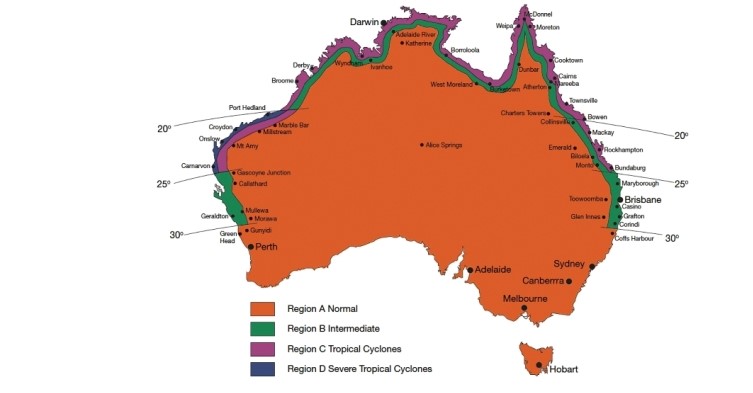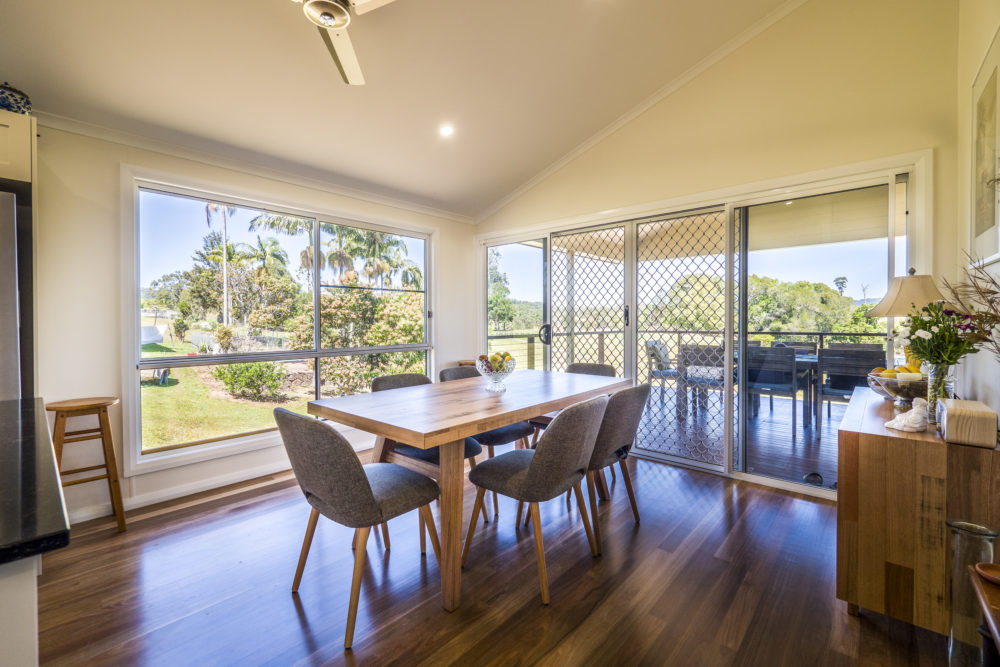Can modular homes be designed to meet a cyclone rating?
A common question we frequently get asked is "Can your modular homes be designed to be cyclone rated?" And the answer is, yes, quite easily.
However, there is quite a bit more to it than just simply applying a ‘cyclone rating’ to a new home, modular or otherwise. So, read on to find out more about what this is and what difference it makes.
CYCLONIC WIND RATING
The Australian Standards for wind design are broken up into categories as per the below table. The wind class’s starting with the letter N are for Non-cyclonic areas while the wind classes beginning with a ‘C’ are for cyclonic regions.
| Wind Class | Common Notation |
Serviceability (m/s) |
Ultimate (m/s) |
| N1 | W28 | 26 | 34 |
| N2 | W33 | 26 | 40 |
| N3 | W41 | 32 | 50 |
| N4 | W50 | 39 | 61 |
| N5 | W60 | 47 | 74 |
| N6 | W70 | 55 | 86 |
| C1 | W41C | 32 | 50 |
| C2 | W50C | 39 | 61 |
| C3 | W60C | 47 | 74 |
| C4 | W70C | 55 | 86 |
Most homes in South East QLD are designed to suit an N3 wind rating. This means your typical home should be able to easily withstand a wind gust of at least 32 m/s (115km/h) and ultimately withstand a wind gust of 50 m/s (or 180km/h).
Also by way of comparison, a home in a C4 region must be designed to suit an ultimate wind gust speed of over 300km/h
HOW DO I KNOW IF I’M IN A CYCLONIC REGION?

Now to find out if your new home is going to be in a cyclonic region, there is a helpful map published in the National Construction Code. If you are any further north than 25° south and within 50km of the nearest adjacent coastline, then you are most likely in a cyclone area.
This map highlights the major wind classification regions of Australia. Moreover, this is one of the parameters that a structural engineer must take into consideration when designing your new home.
WHAT ELSE AFFECTS THE WIND CLASS OF A NEW HOME?
However, what we can say is that the following three points are the primary considerations that go into deciding the appropriate rating for your new modular home.
- The wind region your home is located in as shown on the map above.
- The terrain category determines if your home is located in a built-up area with lots of shielding or in a flat, open space right on the beach front with no shielding. The category will take into account what the terrain is like within 500m of your home.
- The topographic class takes into account whether the location of your home is on a slope, how steep the hill is and whether you’re on the windward side of the mountain.
WHAT IS DONE TO ACHIEVE A CERTAIN CYCLONE RATING FOR A MODULAR HOME?
The beauty of a modular home is that because it is already designed to withstand high wind loads and movement for transport, there aren’t a lot of structural changes needed to achieve a high
WINDOWS

Firstly, upgrading windows is quite often the most expensive part of achieving the correct wind rating. This is because not only do the windows have to withstand high wind pressure, it also prevents water penetrating through to the inside of the home. Typically though, for a C1 or C2 rating, this isn’t too difficult as the actual wind rating isn’t that much higher than the standard N3 rating used.
Click here to check out this great video by AWS on cyclonic windows.
ROOFING
INTERNAL WALL TIE DOWNS
CUSTOM DESIGN
That is why it so essential to employ the services of a qualified structural engineer. Because a qualified structural engineer will consider all the relevant standards and codes, make the required calculations and provide us, the builder, with the correct wind classification to ensure that your home is built right.
FINAL WORD
To learn more about modular construction, click here to book a no obligation consultation with one of our modular experts. We’d be happy to answer any questions you may have.



